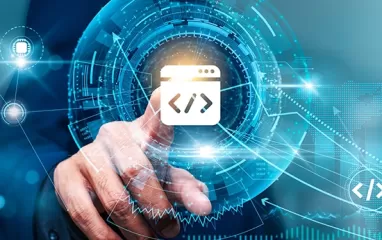Other recent blogs



Let's talk
Reach out, we'd love to hear from you!
Product engineering and product development are often used interchangeably by product teams. However, these two terms are different.
They are closely connected disciplines for sure, but they are different. And it’s important that you understand the differences whether you are a complete novice in the product market or are someone with decades of experience.
In this blog, we’ll talk about the fundamentals of product engineering and product development. More specifically, we’ll look into what differentiates product development from product engineering.
What is product engineering?
Product engineering is a specialized subset of the overall product development process. It primarily refers to the technical aspects of a product and spans across the design, development, and testing phases of a product lifecycle.
So if you look at it, it’s part of product development, and has more to do with the technical aspects of building a product such as a digital application. Product engineering can refer to software engineering and might comprise development of a myriad range of products. It’s also a multidisciplinary field as it borrows principles and practices from electrical engineering, mechanical engineering, software engineering, and several other disciplines.
Key benefits of product engineering include faster time-to-market, cost efficiency, improved product reliability, and seamless integration with emerging technologies. Engineers leverage cutting-edge tools like AI, cloud computing, IoT, and DevOps to streamline development and enhance user experience. Whether it's enhancing software efficiency, designing robust hardware, or ensuring compliance with industry standards, product engineering is essential for building high-quality, future-proof solutions.
What is product development?
Product development is the process of bringing a product to life. It includes all the work and effort teams undertake to build a product - everything from generating product ideas to creating viable prototypes to development and market launch. So, as you can see, product development is a much more comprehensive thing than product engineering.
A well-structured product development approach brings several key benefits. It ensures faster time-to-market by streamlining ideation, prototyping, and execution. It reduces risks by validating ideas early, minimizing costly errors in later stages. Additionally, it enhances customer satisfaction by focusing on user-centric design and continuous iteration based on real-world feedback. Ultimately, a strong product development strategy lays the foundation for long-term growth, market differentiation, and business success, making it an indispensable process for any company looking to build impactful products.
Product engineering vs product development
Product engineering and product development are intrinsic to each other’s success. However, we need to keep in mind that they are different in terms of their mission and scope of activities.
When Should You Focus on Product Engineering vs. Product Development?
Understanding the difference between the two is vital, but more important is also to prioritize which one to be executed in which scenarios.
- Early stage ideation and market research: If you are starting with a product idea, validating market demand, you should focus on product development. This phase demands broader strategy development.
- MVP design: Once the product vision and roadmap are defined, the focus shifts to product engineering. Here, technical expertise is required and is crucial; whether it's building secure software, or testing for performance and reliability.
- Growth Phase: As the product reaches maturity, both product development and product engineering become crucial. Product Engineering focuses on maintaining performance, integrating new tech like AI, and fixing bugs, while product development drives feature rollouts based on customer feedback and market trends.
| What differentiates them | Product engineering | Product development |
|---|---|---|
| What it is | PE is about the technical design, development, and optimization of a product. | PD is a broad concept and covers the entire process of bringing a product from idea to market. |
| What it covers | PE primarily covers engineering, design, prototyping, and manufacturing feasibility. | PD is about market research, strategy, design, development, and launch. |
| Focus areas | Software/hardware architecture, scalability, performance, security, and reliability. | User needs, market demand, business goals, and go-to-market strategies. |
| What’s the process | Involves design, development, testing, and iteration of technical solutions. | Covers ideation, validation, prototyping, development, and commercialization. |
| Role in entire product lifecycle | Primarily deals with the engineering aspects of the product lifecycle. | Involves the entire lifecycle from concept to post-launch improvements. |
| Tools and technologies | Programming languages, cloud platforms, DevOps tools, CAD software, etc. | Market research tools, roadmaps, analytics platforms, and collaboration tools. |
The overlap: Where product development meets product engineering
The most successful companies are increasingly blurring the lines between development and engineering to unlock a new stream of opportunities such as faster time-to-market, greater innovation, and higher-quality products. Teams across functions speak the language of the user and this new kind of collaboration sets the stage for new revenue streams and elevated customer satisfaction.
Think about it: When engineers are part of the product development process from early on, they can share fresh technical insights into what’s possible with the new and evolving tech landscape, what could be automated, what’s risky, etc. These insights can fuel the initial development stage and pave the way for products that are more aligned with what customers truly demand.
Bottom line
It is imperative for modern organizations to build, market, and deliver products that are perfectly aligned with the needs and wants of modern customers. It is equally important for product teams and marketers to understand the scopes of product development and product engineering. While both the development practices are integral to the development of customer-centric products, they are essentially different. While product engineering is more about technicalities across design, development and product launch, product development is far more exhaustive in terms of tools, technologies, and expertise.
At Kellton, an AI-first approach is central to our product development and engineering practices. Over years, we have helped scores of businesses across diverse industries succeed in their markets by helping them build secure, agile, and future-proof products and solutions. We'd like to hear about your on-going or next project and recommend you the best path forward.



